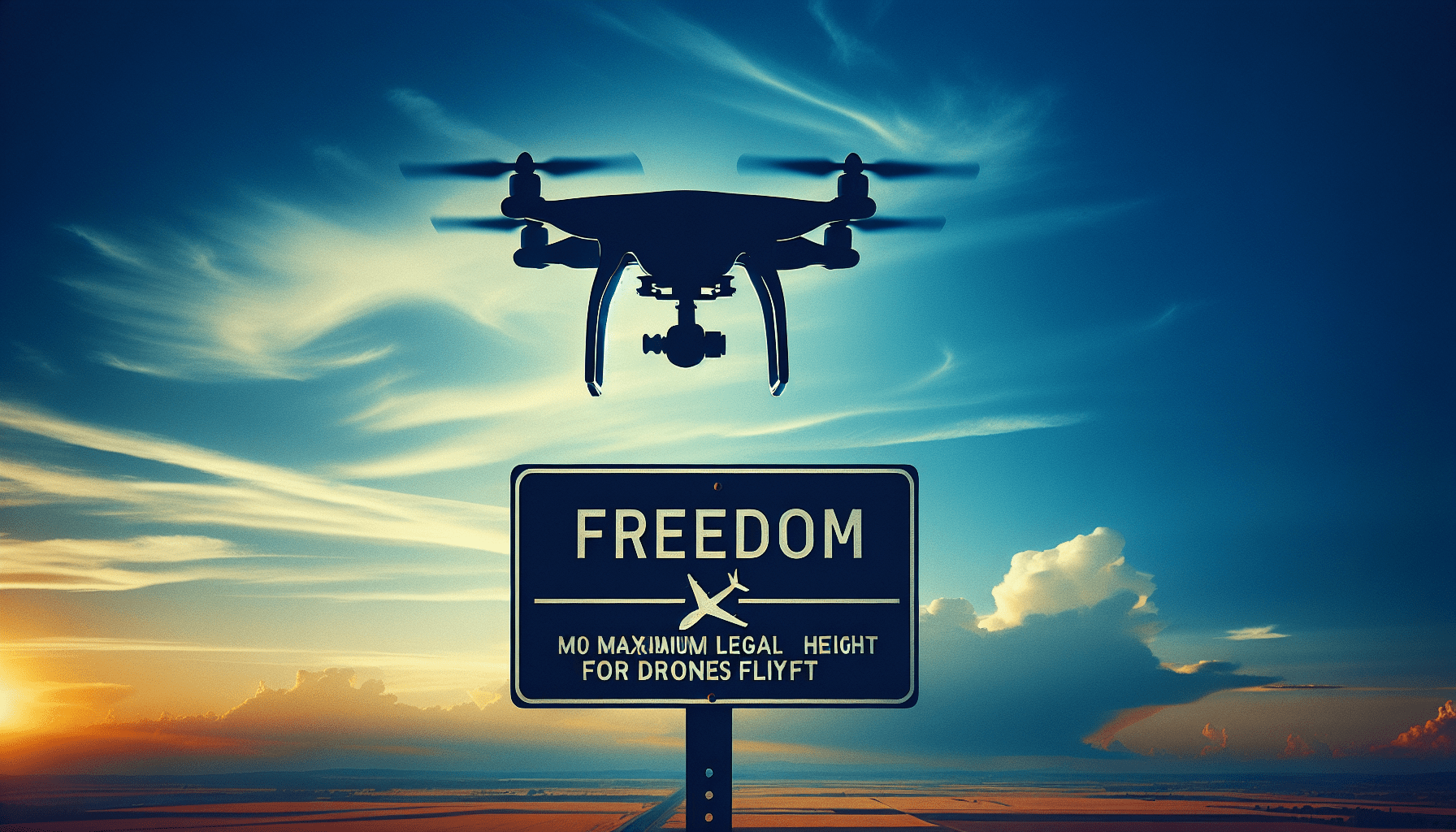“What Is The Maximum Altitude A Drone Can Legally Fly?”
Curious about how high you can legally fly your drone? In this informative article, we will explore the regulations and restrictions surrounding the maximum altitude for drone flight. Let’s dive in and find out what the rules are!
Understanding Maximum Altitude Limits
Before you take your drone to the skies, it’s important to understand the maximum altitude limits set by aviation authorities. These limits are in place to ensure the safety of manned aircraft and other airspace users. By following these regulations, you can enjoy flying your drone while minimizing the risk of accidents.
Federal Aviation Administration (FAA) Regulations
In the United States, the Federal Aviation Administration (FAA) is the governing body responsible for regulating drone operations. According to the FAA, drones are not permitted to fly above 400 feet above ground level (AGL) in most situations. This restriction helps to prevent conflicts with manned aircraft that typically fly at higher altitudes.
Civil Aviation Safety Authority (CASA) Regulations
If you’re in Australia, the Civil Aviation Safety Authority (CASA) is the agency that oversees drone regulations. CASA also imposes a maximum altitude limit of 120 meters (approximately 394 feet) for recreational drone flights. Keep this limit in mind to ensure compliance with Australian drone laws.
Factors Affecting Maximum Altitude
Several factors can affect the maximum altitude at which you can fly your drone safely and legally. Understanding these factors will help you make informed decisions when operating your drone.
Battery Life
One crucial factor that determines the maximum altitude of your drone is its battery life. As your drone ascends to higher altitudes, it consumes more power to maintain flight. Monitoring your battery level is essential to ensure a safe return to the ground before your battery runs out.
Weather Conditions
Weather conditions such as wind speed, temperature, and humidity can impact your drone’s performance at higher altitudes. Strong winds can make it challenging to control your drone, while extreme temperatures may affect battery life. Always check the weather forecast before flying your drone to avoid potential issues.
Airspace Restrictions
In addition to altitude limits, airspace restrictions set by aviation authorities can also impact where you can fly your drone. Certain areas, such as airports, military installations, and national parks, may have restricted airspace that prohibits drone flights. Be sure to check for restricted zones in your area before taking off.
Exceeding Maximum Altitude Limits
It’s crucial to adhere to the maximum altitude limits set by aviation authorities to ensure the safety of your drone and other airspace users. Exceeding these limits can lead to fines, legal consequences, and potential accidents. Here are some tips to avoid exceeding maximum altitude limits:
Use Altitude Limiting Features
Many modern drones come equipped with altitude limiting features that prevent them from ascending above a certain height. These features are designed to help you comply with regulations and fly safely within legal limits. Make sure to enable these features in your drone’s settings for added peace of mind.
Maintain Visual Line of Sight
To avoid accidentally exceeding maximum altitude limits, it’s essential to maintain visual line of sight with your drone at all times. By keeping your drone within your line of sight, you can better control its altitude and ensure it stays within legal boundaries. If you’re unsure of your drone’s altitude, bring it down to a lower level to be safe.
Check Local Regulations
Different countries and regions may have varying maximum altitude limits for drone flights. Before flying your drone in a new location, research the local regulations to ensure compliance with the law. Taking the time to familiarize yourself with the rules can help you avoid unintentionally breaking them and facing potential consequences.
Safety Tips for Flying at High Altitudes
Flying your drone at high altitudes can be an exhilarating experience, but it’s essential to prioritize safety above all else. Here are some safety tips to keep in mind when flying your drone at maximum altitudes:
Monitor Battery Levels
Regularly monitoring your drone’s battery levels is crucial when flying at high altitudes. As the altitude increases, your drone’s battery will drain more quickly due to the additional power required for flight. Be mindful of your remaining battery life and plan your flight accordingly to ensure a safe return to the ground.
Perform Pre-flight Checks
Before taking off, perform thorough pre-flight checks to ensure your drone is in optimal condition for high-altitude flight. Check for any signs of damage, verify that all components are functioning correctly, and calibrate your drone for accurate altitude readings. Taking these precautions can help prevent accidents and ensure a smooth flight.
Avoid Flying in Adverse Weather
Flying your drone at high altitudes in adverse weather conditions can pose significant risks to both your drone and other airspace users. Strong winds, precipitation, and low visibility can hinder your ability to control your drone effectively. If the weather conditions are unfavorable, it’s best to postpone your flight to a safer time.
Conclusion
In conclusion, the maximum altitude a drone can legally fly varies depending on the regulations set by aviation authorities in your location. By understanding these limits, considering the factors that affect maximum altitude, and following safety guidelines, you can enjoy flying your drone while staying compliant with the law. Remember to prioritize safety, adhere to local regulations, and take precautions when flying at high altitudes to ensure a positive and enjoyable drone flying experience.

